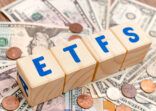Performance

The CSI 300 Index and CSI 300 Smart Index returned -14.66% and -11.89% respectively in RMB terms in the first half of 2016.
However, both iShares and CSOP ETFs underperformed their benchmarks, by -1.96% (HKD version) and -2.47% (RMB version), respectively.
The latest annual ongoing charges (OCF) of the two ETFs are relatively high for exchange traded funds, Ng said.
The were 1.17% for iShares and 1.90% for CSOP. Contirbuting to the costs could be the tracking differences as well as the replication strategies mentioned earlier, he said. In the case of CSOP, the switching between A and H shares involves continual trading costs.
Conclusion

The choice between the two products is straightforward.
“iShares suits investors who aim to track A-share performance, whereas CSOP provides opportunities to exploit the prices differences between A and H shares,” Ng said.
“However, tracking differences could be somewhat apparent due to the aforementioned reasons.”
Investors who want to make a substantial investment could invest in the primary market through respective participating dealers for unit creation and redemption.
“Investors trading via the secondary market should look at the ETF’s bid/ask spread, the premium and discount between the market prices and the NAVs, as well as the liquidity of these vehicles.”
For example, the iShares ETF is currently trading at around 10% discount versus its actual NAV on the exchange (on 16 Aug 2016) and the CSOP rarely had trading volumes since it was launched last October, Ng said.
















